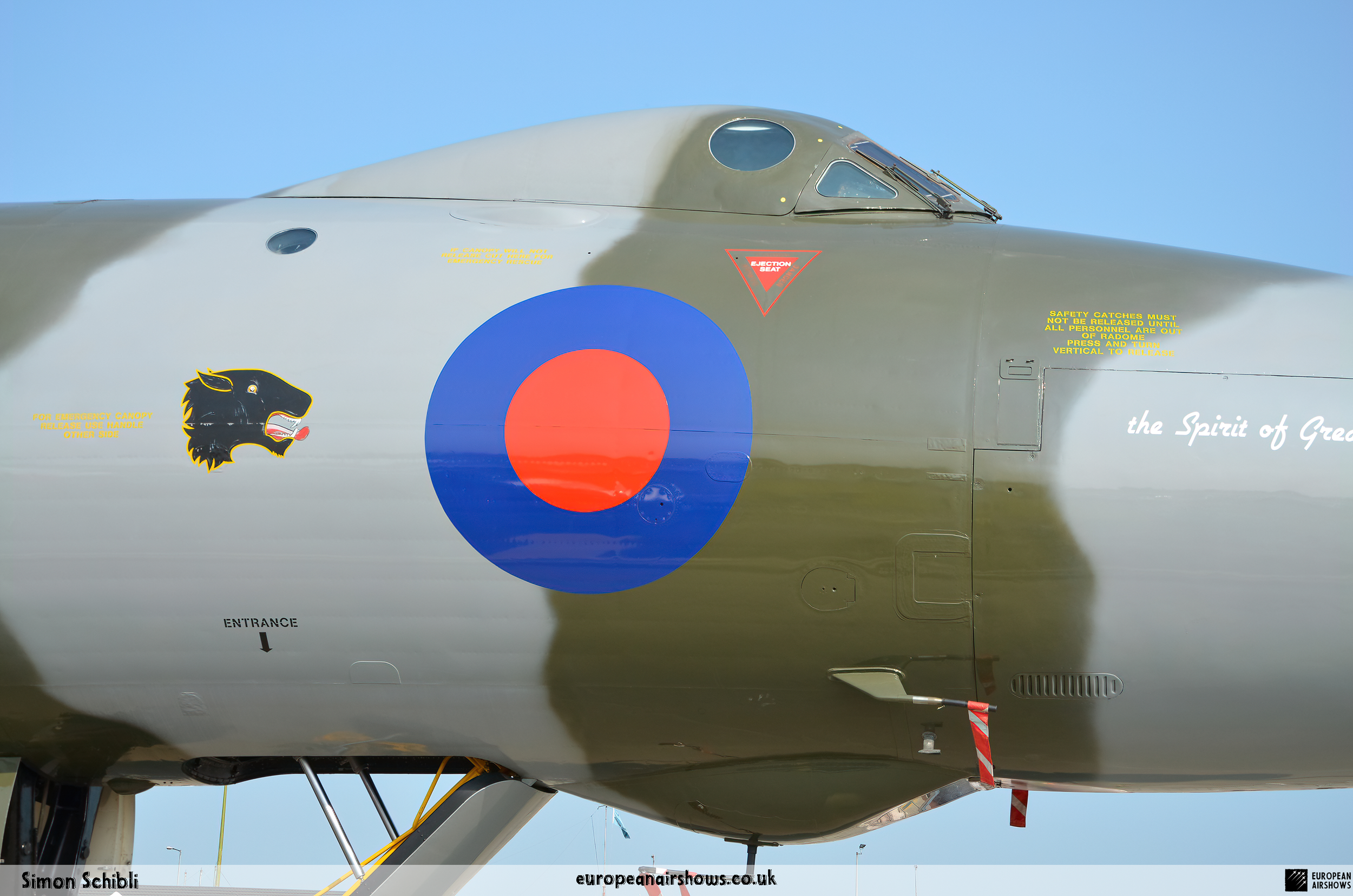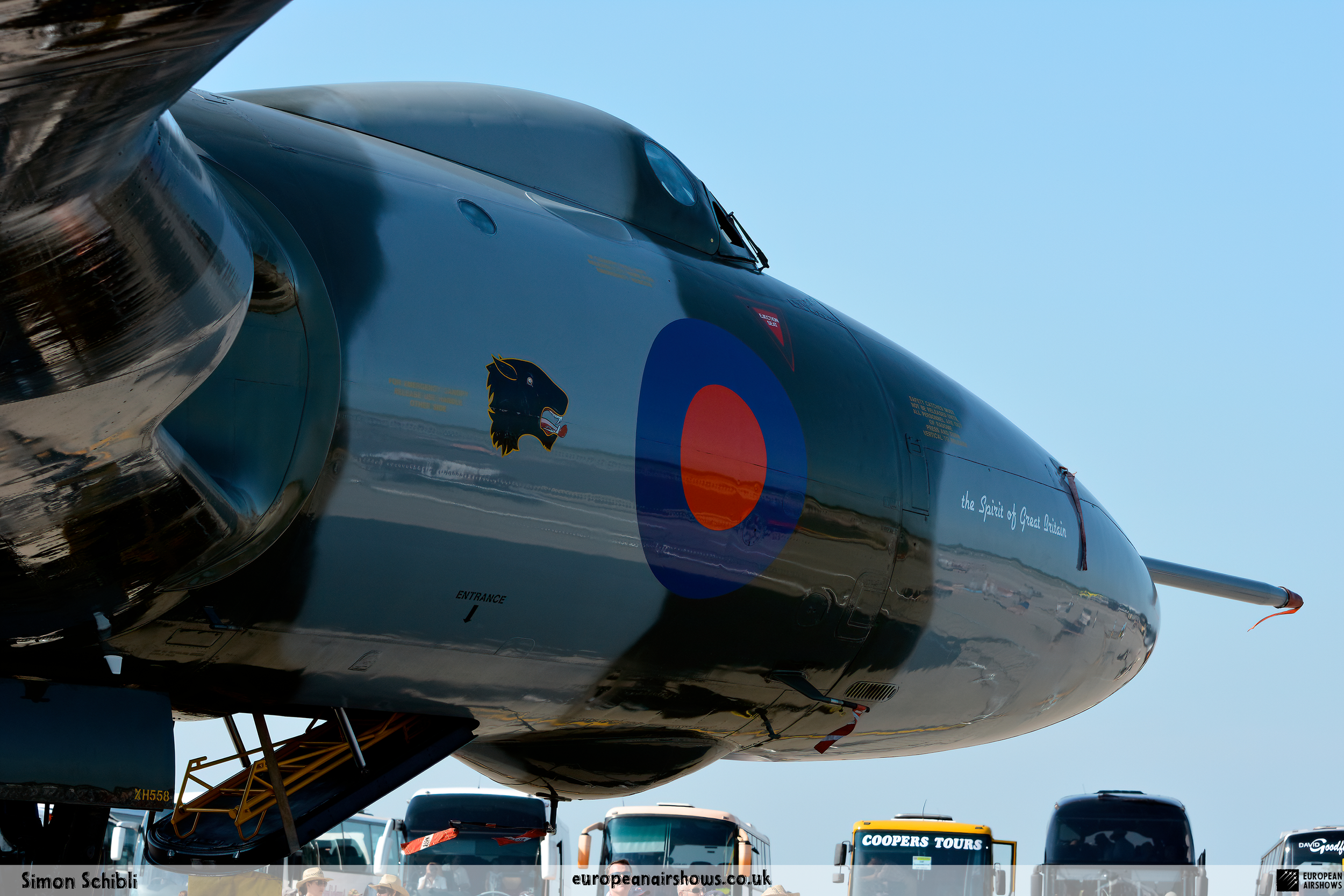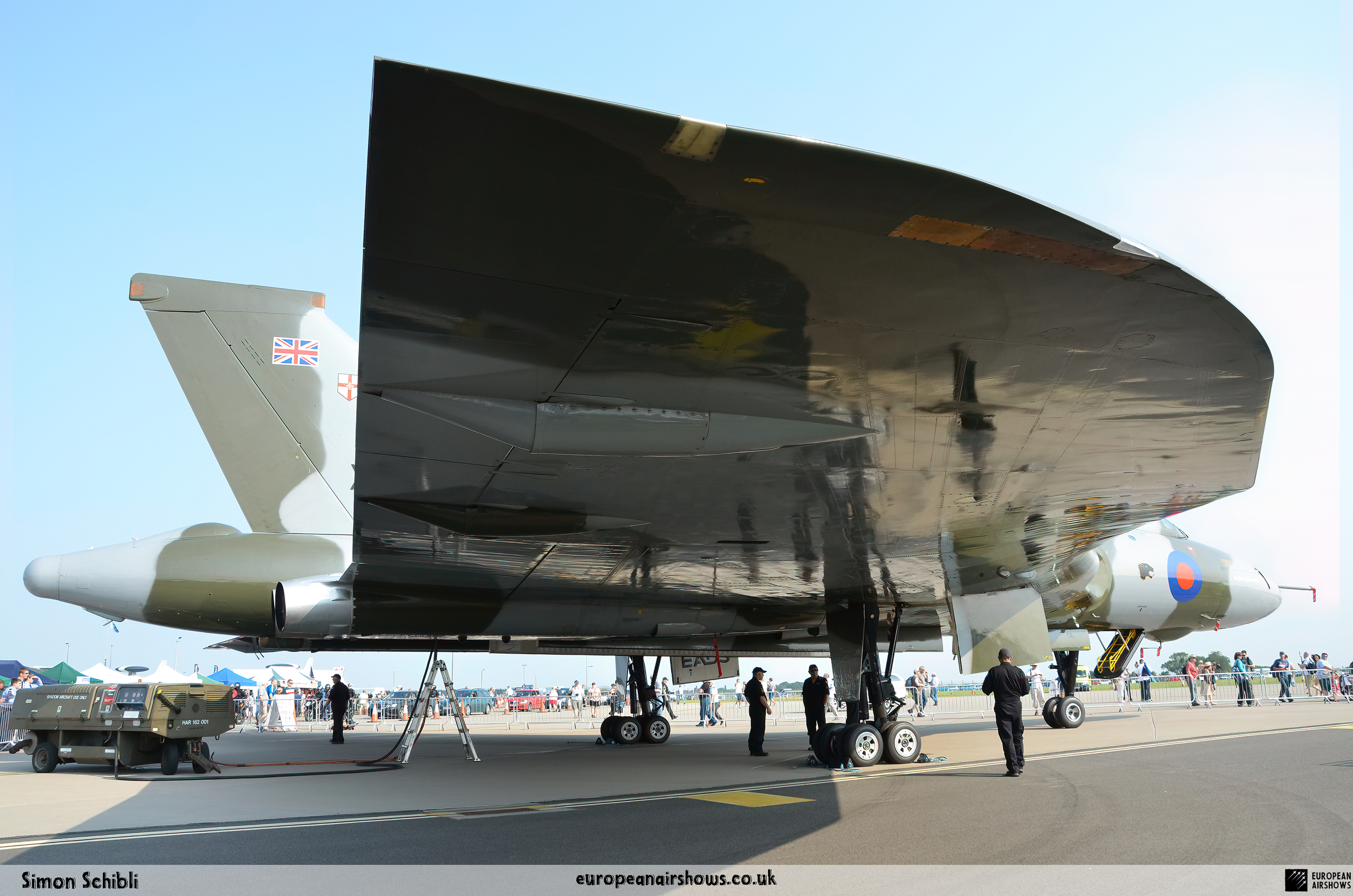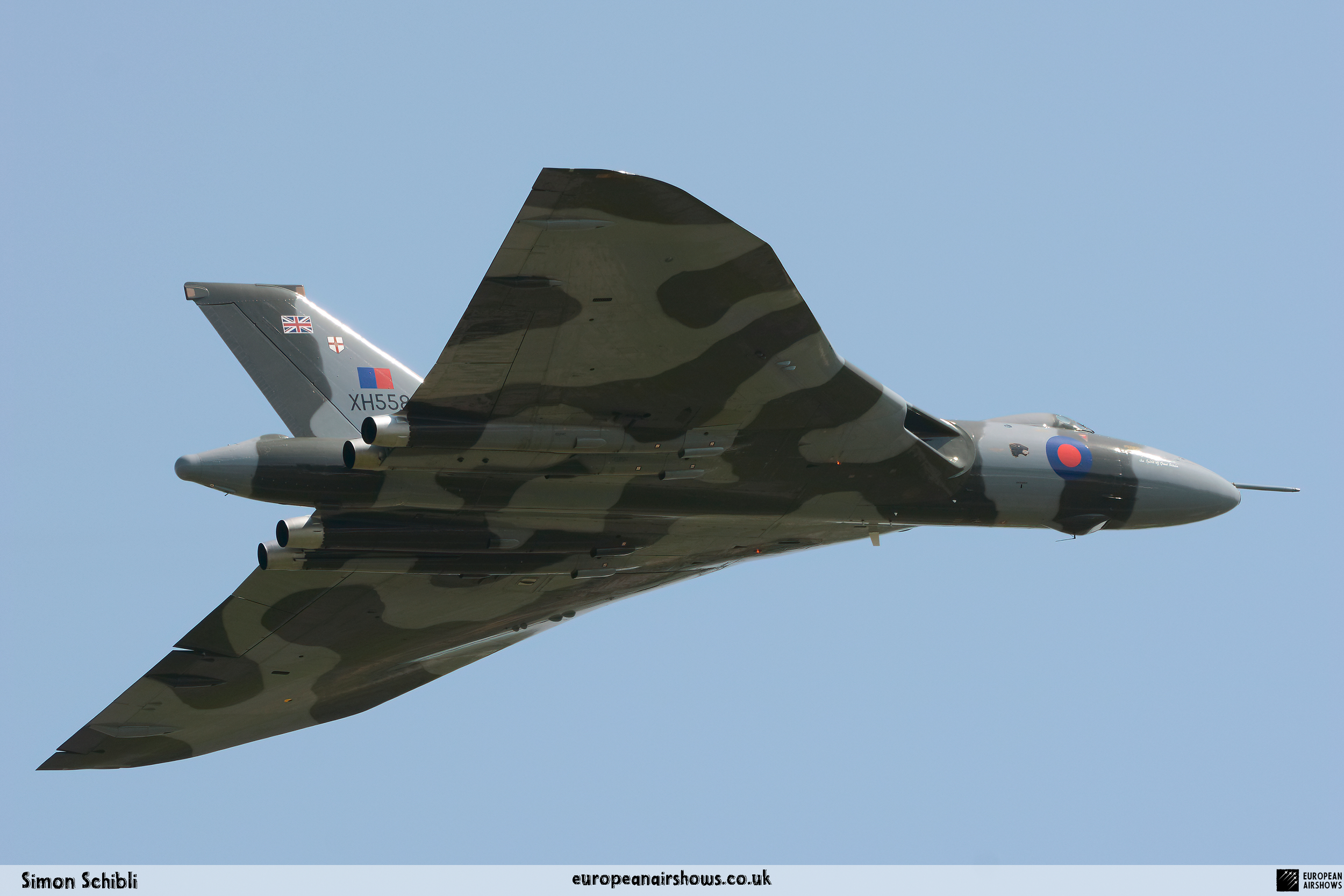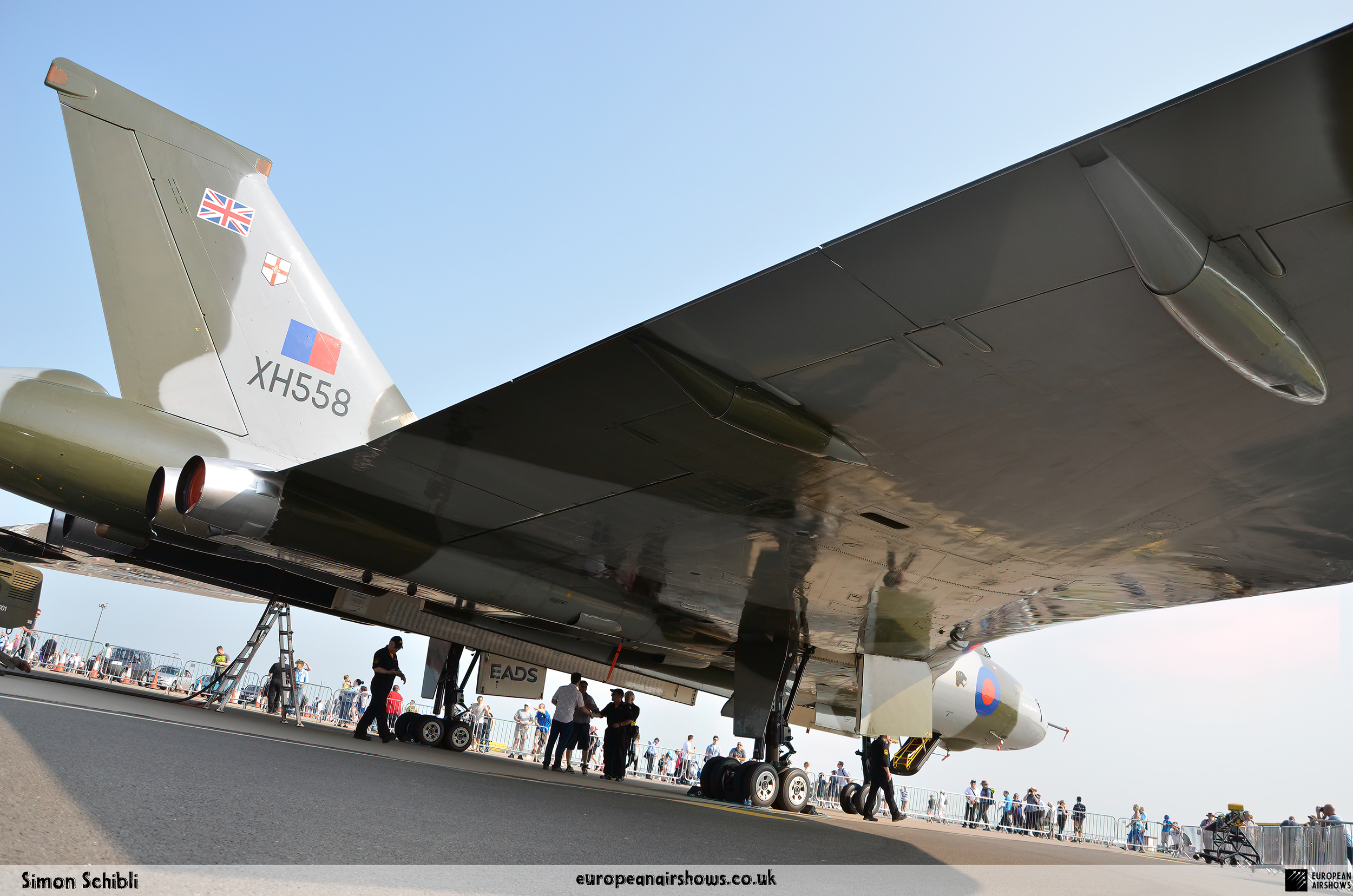
August 30 / Avro Vulcan first flight
First Flight 30 August 1952
Avro Vulcan
The Avro Vulcan, which was later renamed Hawker Siddeley Vulcan in July 1963, was a remarkable high-altitude, strategic bomber that served the Royal Air Force (RAF) from 1956 to 1984. It was a four-engine, jet-powered, tailless aircraft that had a unique delta-wing design. It was created by aircraft manufacturer A.V. Roe and Company (Avro) in response to Specification B.35/46, which required a bomber that could fly at high altitude and supersonic speeds and deliver a nuclear payload to the Soviet Union in the event of a war.
The Vulcan was one of the most technologically advanced aircraft of its time, and it was the most complex and expensive to produce. It was also the riskiest option because of its unique design. To refine the delta-wing design principles, several reduced-scale aircraft, designated Avro 707s, were produced.
The Vulcan B.1 was first delivered to the RAF in 1956, and the improved Vulcan B.2 deliveries started in 1960. The B.2 model was an upgrade of the B.1 model, with more powerful engines, a larger wing, an improved electrical system, and electronic countermeasures. Many B.2s were modified to accept the Blue Steel missile, a nuclear-armed missile designed to be launched from the Vulcan while flying at high altitudes. As part of the V-force, the Vulcan was the backbone of the UK's airborne nuclear deterrent during much of the Cold War.
Despite being primarily armed with nuclear weapons, the Vulcan could also carry out conventional bombing missions, which it did in Operation Black Buck during the Falklands War between the UK and Argentina in 1982.
Initially, the Vulcan had no defensive weaponry and relied on high-speed, high-altitude flight to evade interception. However, electronic countermeasures were employed by the B.1 (designated B.1A) and B.2 from around 1960. In the mid-1960s, a change to low-level tactics was made, which involved flying at low altitudes to avoid radar detection. In the mid-1970s, nine Vulcans were adapted for maritime radar reconnaissance operations and redesignated as B.2 (MRR). In the final years of service, six Vulcans were converted to the K.2 tanker configuration for aerial refuelling.
After retirement by the RAF, one example, B.2 XH558, named The Spirit of Great Britain, was restored for use in display flights and air shows. Two other B.2s, XL426 and XM655, have been kept in taxiable condition for ground runs and demonstrations. B.2 XH558 flew for the last time in October 2015 and is also being kept in taxiable condition.
The Vulcan remains a beloved aircraft and a symbol of British engineering. It was known for its unique delta-wing design, which allowed it to achieve high speeds and fly at high altitudes. It was the most technically advanced of the three V bombers produced by the UK, which included the Handley Page Victor and the Vickers Valiant. The Vulcan was also the riskiest option, as it was the most complex and expensive to produce. The Vulcan was the backbone of the UK's airborne nuclear deterrent during much of the Cold War. Although it was primarily armed with nuclear weapons, it could also carry out conventional bombing missions. It played a significant role in military operations, including the Falklands War. Today, the Vulcan is still remembered as one of the most iconic aircraft of the Cold War and a symbol of British engineering excellence.
Vulcan Facts
Design Origins: The Vulcan was designed by Avro in the 1950s as part of the British V-bomber program, which aimed to develop a fleet of nuclear-capable bombers for the UK. Its unique delta wing design was chosen for its aerodynamic efficiency and performance at high speeds.
First Flight: The Vulcan made its maiden flight on August 30, 1952. It was one of the first aircraft to be designed using advanced computer-aided design techniques, which were cutting-edge for the time.
Nuclear Deterrent: The Vulcan was part of the United Kingdom’s strategic nuclear deterrent during the Cold War. It was capable of carrying the Blue Steel stand-off missile, which allowed it to strike targets from a distance without entering heavily defended airspace.
Crew Composition: The Vulcan typically had a crew of five, which included a pilot, co-pilot, navigator, bombardier, and a flight engineer. The crew worked closely together to operate the aircraft and manage its complex systems.
Operation Black Buck: The Vulcan was famously used in the Falklands War in 1982 during Operation Black Buck, where it conducted long-range bombing missions against Argentine positions. The missions required aerial refuelling, with some flights exceeding 8,000 miles round trip.
Unique Landing Gear: The Vulcan featured a distinctive retractable landing gear system that included four main wheels and a nose wheel. The landing gear was designed to allow the aircraft to operate from shorter runways if necessary.
High-Altitude Performance: The Vulcan was capable of flying at high altitudes, typically around 50,000 feet. This altitude helped it evade enemy radar and surface-to-air missiles during its missions.
Noise Level: The Vulcan was known for its distinctive roar, produced by its four Rolls-Royce Olympus engines. The sound was so iconic that it became a hallmark of airshows and military displays, often eliciting excitement from spectators.
Retirement and Preservation: The Vulcan was retired from service in 1993, but several airworthy examples have been preserved by various organizations. The Vulcan to the Sky Trust worked to keep one flying, and it made its last public flight in 2015.
Cultural Impact: The Vulcan has become a symbol of British aviation history and military prowess. It has appeared in various films, documentaries, and television shows, further cementing its status as an iconic aircraft in popular culture.


